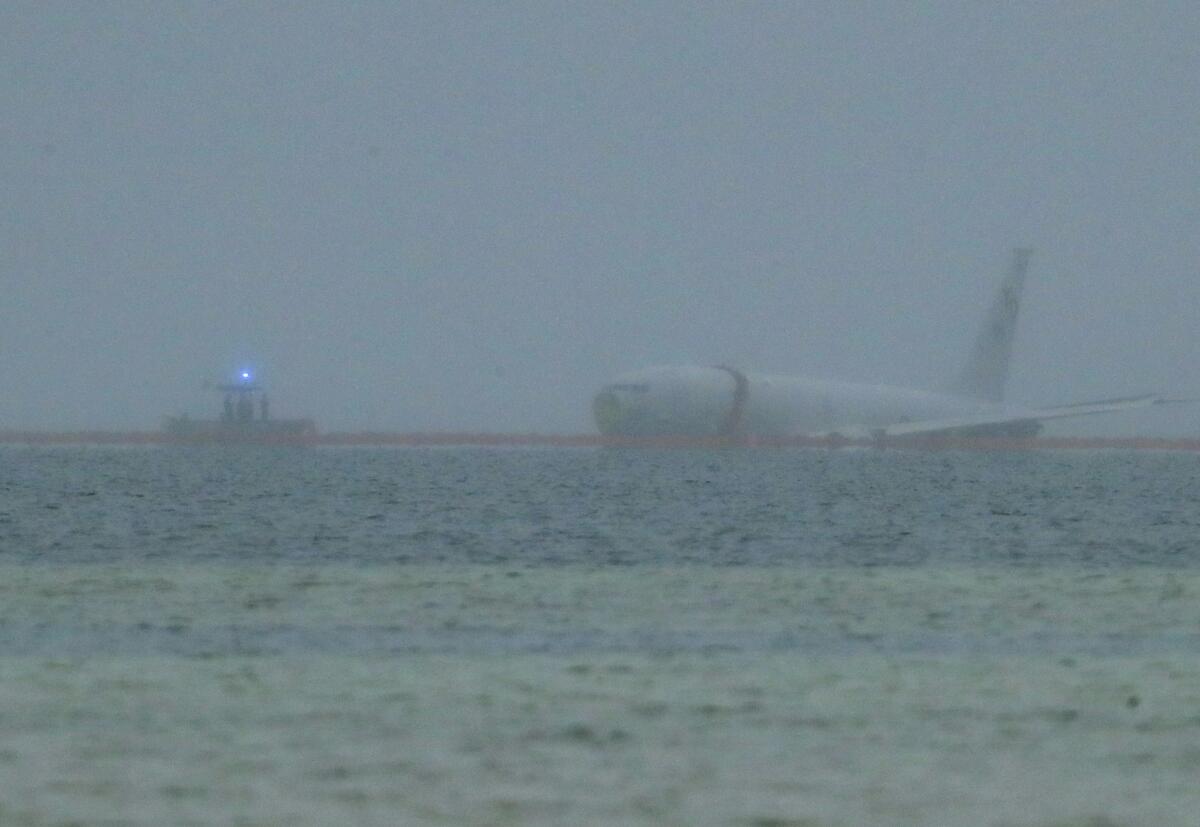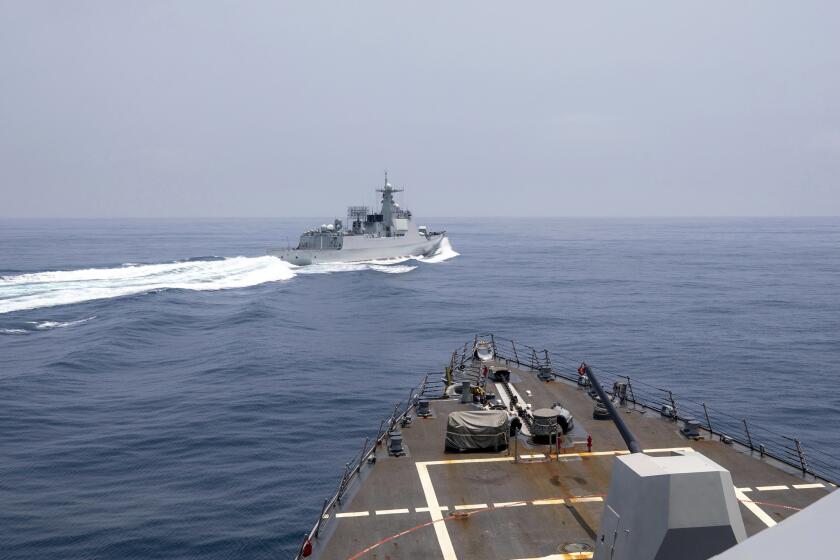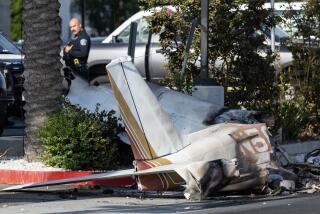Navy plane overshoots runway and ends up in ocean, but all aboard escape unharmed

HONOLULU — A large U.S. Navy plane remained in a Hawaii bay Tuesday, the morning after it overshot a runway and landed in the water, raising concern about environmental damage and questions over how the military would remove the aircraft.
All nine people aboard the P-8A were uninjured when the plane, flying in rainy weather, overshot the runway Monday at a Marine Corps base in Kaneohe Bay outside Honolulu.
Crews set up a temporary floating barrier to protect the environment, and an investigation is underway, Navy spokesperson Lt. Mohammad N. Issa said in an email Tuesday.
The P-8A is often used to hunt for submarines and for reconnaissance and intelligence-gathering. It is manufactured by Boeing and shares many parts with the 737 commercial jet.
Residents near the bay were eager to hear plans for the massive plane’s removal and were worried about possible damage to the coral reef in the area, along with harms from fuel and other chemicals.
The U.S. says a Chinese navy ship cut in front of an American destroyer in the Taiwan Strait, forcing the destroyer to slow down to avoid a collision.
The plane landed about 1.5 miles from an ancient Hawaiian fishpond, said Hi‘ilei Kawelo, executive director of Paepae o He‘eia, the organization that cares for the pond.
“The plane in the water is concerning,” she said. “It’s directly upwind from our fishpond.”
Kawelo said she understands removing the plane is a big undertaking but is hopeful that the military will at least defuel it “in a timely fashion — like today.”
Navy officials didn’t immediately answer questions Tuesday about extraction plans, environmental concerns and how the plane ended up in the water.
The area where the plane landed near the base isn’t accessible to the public, but Kawelo said she is familiar with the broader reef that extends in the bay, which is abundant in small fish and octopi.
The three U.S. Marines killed in a tilt-rotor aircraft crash during a training exercise in Australia were from Illinois, Virginia and Colorado.
“I’m hoping that it landed on a sandy patch that didn’t house any coral,” she said. “But our coral reefs are absolutely critical and important for the ecosystem. … They are the foundation for life in the ocean.”
Wayne Tanaka, executive director of Sierra Club of Hawaii, said he wants the state to hold the Navy accountable for any damage.
The state Department of Land and Natural Resources is expected to conduct a damage assessment after the plane is removed, department spokesperson Dan Dennison said.
The plane is adding to the community’s distrust of the military, Tanaka said, noting a massive fuel storage facility that sickened 6,000 people when it leaked jet fuel into a Pearl Harbor drinking water well in 2021.
More to Read
Sign up for Essential California
The most important California stories and recommendations in your inbox every morning.
You may occasionally receive promotional content from the Los Angeles Times.












